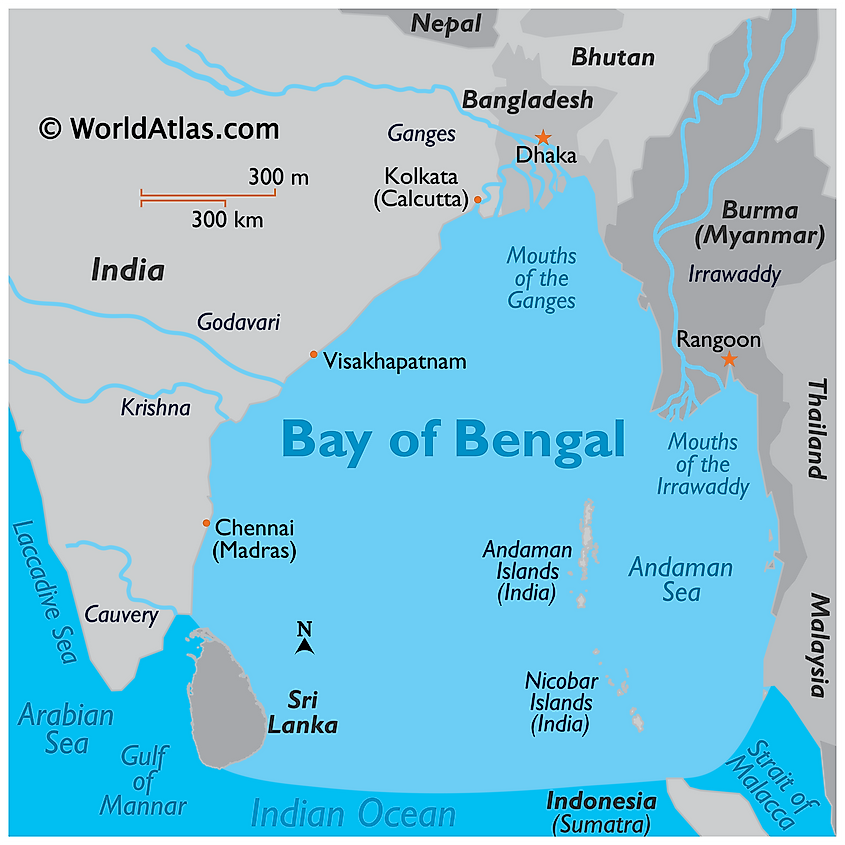By Nazia Hussain SYNOPSIS Ahead of the 6th BIMSTEC Summit, Thailand, as Chair of BIMSTEC, is focused on furthering the regional organisation’s institutionalisation and on strengthening connectivity among the member states around the Bay of Bengal. COMMENTARY With a...

By Nazia Hussain
SYNOPSIS
Ahead of the 6th BIMSTEC Summit, Thailand, as Chair of BIMSTEC, is focused on furthering the regional organisation’s institutionalisation and on strengthening connectivity among the member states around the Bay of Bengal.
COMMENTARY
With a pledge to make the Bay of Bengal Initiative for Multi-Sectoral Technical and Economic Cooperation (BIMSTEC) a more tangible grouping, Thailand assumed the BIMSTEC Chairmanship last year and is now gearing up to host the 6th BIMSTEC Summit and related meetings in 2024.
Bangkok aimed to take the opportunity as Chairman to revitalise this grouping which had very little visibility since it was established with the signing of the Bangkok Declaration in 1997. A revitalised BIMSTEC could not only expand Thailand’s Look West Policy, but it also has the potential to emerge as a relevant sub-regional grouping connecting South and Southeast Asia given that shifting geopolitical dynamics have brought about a renewed interest in the Bay of Bengal and the Indo-Pacific.
Consolidating on the outcomes of the 5th BIMSTEC Summit which included adoption of the Charter that lays down the legal and institutional frameworks of BIMSTEC, Thailand has worked to strengthen BIMSTEC institutionalisation by hosting the first-ever Foreign Ministers’ Meeting – to be held annually – and approving the terms of reference for an Eminent Persons Group mandated to provide strategic guidance on charting a roadmap for the future course of BIMSTEC.
Thailand as Lead for Connectivity
Having streamlined its priority areas from 14 to 7 – trade, environment, security, agriculture, people-to-people contact, science and technology, and connectivity – Thailand took the lead for the BIMSTEC connectivity pillar and aims to oversee the implementation of the BIMSTEC Master Plan for Transport Connectivity adopted at the 5th BIMSTEC Summit.
The connectivity master plan is a 10-year strategy (2018-2028) to bolster transport and trade linkages through the development of hard infrastructure such as roads, railways, ports, inland waterways, and airports, as well as soft infrastructure such as capacity building, transport access agreements, and the harmonisation of rules, regulations, policies, and measures related to transport between and among BIMSTEC Member States.
It also offers a framework to enhance regional and domestic connectivity in the Bay of Bengal while integrating with the wider Indo-Pacific – crucial in the BIMSTEC region that despite being home to 1.8 billion people, or nearly 22 per cent of the world’s population, it remains one of the least integrated regions in the world.
As a member of both the Association of Southeast Asian Nations (ASEAN) and BIMSTEC, Thailand is in a unique position to identify lessons from the successful implementation of the ASEAN Master Plan on Connectivity 2025 (MPAC 2025) and promote synergies among the latter and other connectivity initiatives such as the Ayeyawady-Chao Phraya-Mekong Economic Cooperation Strategy (ACMECS).
The current BIMSTEC Connectivity Master Plan identifies 141 flagship projects at an estimated cost of US$47 billion. However, lack of a comprehensive budgeting proposal and inadequate funding sources remain as issues for the implementation of projects under the connectivity master plan, especially as the creation of the BIMSTEC Development Fund has not yet been realised.
Furthermore, connectivity projects such as the India-Myanmar-Thailand Trilateral Highway have lagged behind the deadline to be operational by December 2019, the latest delay attributable to the internal security situation in Myanmar. Myanmar Commerce Minister, Aung Naing Oo, stated that the portion of the highway in Myanmar is likely to be ready by 2026.
The successful implementation of the BIMSTEC Connectivity Master Plan will require identifying sources for funding, bringing in stakeholders from the private sector and acquiring sufficient political will for the grouping to remain a foreign policy priority for member states.
Advancing Trade for BIMSTEC Integration
Intra-regional trade is an important measure of connectivity and regional integration, and the dismal BIMSTEC intra-regional trade figures – which only amounted to 6.15 per cent of member countries’ total trade in comparison to ASEAN’s approximately 23 per cent in 2020 – is an indicator of the lack of integration in the Bay of Bengal.
Improving trade facilitation with a reduction of non-tariff barriers, updating regulatory frameworks, and harmonisation of standards is urgently required for BIMSTEC to make any meaningful progress on economic integration. For instance, realising a BIMSTEC regional single window – akin to the ASEAN Single Window which expedited electronic customs clearance and hence enhanced ASEAN economic integration – would reduce the cost and time needed for cross-border trade in BIMSTEC.
Trade within BIMSTEC would also benefit from a speedy conclusion of the BIMSTEC Free Trade Agreement (FTA) which has been under negotiation since 2004. With the COVID-19 pandemic having accelerated digital trade and transformation in BIMSTEC countries, the FTA negotiation should include a comprehensive digital economy component that provides a common regulatory framework for digital trade, addresses data protection issues, and promotes capacity building to equip the workforce with digital up-skilling and re-skilling.
As Bangladesh, also the lead-country for the trade pillar, takes over BIMSTEC chairmanship in 2024 from Thailand following the 6th BIMSTEC Summit, Dhaka could learn from the ASEAN experience as the Southeast Asian regional grouping launched, on 3 September 2023, the negotiation of its ASEAN Digital Economy Framework Agreement aimed at creating a sustainable and inclusive digital trade ecosystem.
Bangladesh could also look to New Delhi’s progress in its digital payments system – United Payments Interface (UPI) – which can be used to facilitate overseas digital transactions. India is keen to promote its digital infrastructure template as a model for development around the world, and it has garnered interest among countries. In this regard, Singapore has connected its digital payments platform PayNow to India’s UPI to allow for faster and more cost-efficient cross-border fund transfers.
Expectations from the Upcoming Summit
Thailand’s key priorities during its BIMSTEC chairmanship include launching the BIMSTEC Bangkok Vision 2030 at the 6th BIMSTEC Summit – a leader-level document which will serve as a foundation for guiding BIMSTEC towards a prosperous, resilient and open region by 2030.
Bangkok is also looking to strengthen BIMSTEC’s administrative procedures by submitting key documents for adoption at the 6th BIMSTEC Summit, which are the Rules of Procedure for Core BIMSTEC Mechanisms (i.e., the Summit, the Ministerial Meeting, the Senior Officials’ Meeting, and the BIMSTEC Permanent Working Committee); BIMSTEC Sectoral Mechanisms; and BIMSTEC’s External Relations. The Agreement on Maritime Transport Cooperation is also expected to be signed at the upcoming Summit.
Under the chairmanship of Bangladesh next year, BIMSTEC should aim to conclude its FTA negotiation and focus on achieving progress on the BIMSTEC grid connectivity and energy front. However, Myanmar’s internal political struggle between the Tatmadaw and the ousted National League for Democracy-led government, and now the latest clashes between the Tatmadaw and ethnic armies – collectively called the Three Brotherhood Alliance – will continue to weigh down on Thailand and Bangladesh’s efforts to ramp up BIMSTEC connectivity and trade initiatives.
As global uncertainties mount, raising concerns about the stability of the international order, efforts at reinforcing BIMSTEC integration is imperative for small and middle countries in the region.
Nazia Hussain is Associate Research Fellow with the Centre for Multilateralism Studies (CMS) at the S. Rajaratnam School of International Studies (RSIS), Nanyang Technological University (NTU), Singapore.












